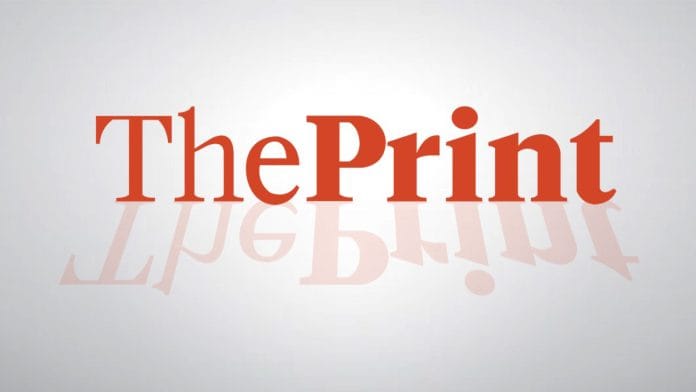Patna, Oct 2 (PTI) The Nitish Kumar government in Bihar on Monday released findings of its much-awaited caste survey months ahead of the 2024 Parliamentary elections, which revealed that OBCs and EBCs constitute a whopping 63 per cent of the state’s total population.
The data which could spur demands for similar caste-based census elsewhere is a key agenda of the opposition INDIA bloc which may well help Kumar and the alliance in the forthcoming elections in the Hindi heartland where caste politics plays a major part.
According to the data released here by Development Commissioner Vivek Singh, the state’s total population stood at a little over 13.07 crore, out of which the Extremely Backward Classes (36 per cent) were the largest social segment followed by the Other Backward Classes at 27.13 per cent.
Backward caste politicians have long claimed that the population of castes they represented numbered far more than the conventional wisdom based on the 1931 census, which was the last time a caste headcount was conducted and released.
The survey also stated that Yadavs, the OBC group to which Deputy Chief Minister Tejashwi Yadav belongs, were the largest in terms of the population, accounting for 14.27 per cent of the total.
Dalits, also known as the Scheduled Castes, accounted for 19.65 per cent of the total population in the state, which is also home to nearly 22 lakh (1.68 per cent) people belonging to the Scheduled Tribes.
Those belonging to the “unreserved” category, which denotes the proverbial “upper castes” who dominated politics till the Mandal wave of the 1990s comprise 15.52 per cent of the total population.
Chief Minister Nitish Kumar said on Monday, “A meeting will soon be convened of all the nine political parties with an electoral presence in the state legislature and the facts and figures will be shared with them.” RJD president Lalu Prasad, also issued a statement, declaring the survey will set the tone for “a nationwide caste census which will be undertaken when we form the next government at the Centre”.
Both Prasad and Kumar have played an instrumental role in the formation of the INDIA coalition, which affirmed its commitment to holding a caste census at a meeting it held in Bengaluru recently.
That the survey would form part of the politics in the run-up to general elections was made quite clear by other leaders too.
“There was no regular census in 2021, while the Bihar state has managed to conduct the caste survey this year, it exposes the central government’s incompetence … Mulsim population has also been found to be 17.7 per cent (against 16.86 per cent in the 2011 census) which exposes the lie spread by Sanghi propaganda about infiltration by Bangladeshi Muslims,” CPI(ML) general secretary Dipankar Bhattacharya told PTI.
The survey establishes that the state’s population is overwhelmingly Hindu, with the majority community comprising 81.99 per cent of the total population, followed by Muslims (17.70 per cent).
Christians, Sikhs, Jains and those following other religions as also the non-believers have a minuscule presence, together making up for less than one per cent of the total population.
Bhattacharya also pointed out that the Mandal recommendations for job reservation were based on the 1931 census which had placed the percentage of backwards at 52 per cent, “But we can see the population has gone up since … this means there has to be a fresh thinking on the issue.” The opposition BJP, however, voiced dissatisfaction with the caste survey, stressing that it did not give an idea of the “changed social and economic realities” over the years.
State BJP president Samrat Choudhary said that his party had “given its consent” for the exercise and would make an assessment of the findings which have now been made public.
Sociologists also considered the Survey findings significant. “Ever since the Mandal Commission recommendations came, backward classes have played an important role in Hindi heartland politics … (as) it became an important factor in pushing identity politics as against ideological politics,” said Prof Amites Mukhopadhyay of Jadavpur University to PTI.
Notably, the survey was ordered last year after the Narendra Modi government at the Centre made it clear that it would not be able to undertake a headcount of castes other than SCs and STs as part of the census.
Bihar Water Resources and Information and Publicity Minister Sanjay Jha termed the census as “an epoch-making decision in independent India. We consider it as a fitting tribute to Gandhi Ji and his ideals of addressing the needs of the poor and marginalized”.
The last time, a headcount of all castes was undertaken, was way back in 1931. Those calling for a fresh caste survey insist that a new estimate was required mainly for the weaker sections of the society which, with improved life expectancy in the post-independence era, must have seen a rise in their proportion of the population.
The state cabinet gave its nod to hold a caste survey on June 2 last year when it also allocated an amount of Rs 500 crore for the mammoth exercise.
The survey briefly ran into rough weather when it was stayed by the Patna High Court which was hearing a bunch of petitions challenging the exercise.
However, the deadline it then set, of February 2023, was overshot and the survey itself could take off no sooner than January 7 this year.
Leaders of the ruling Mahagathbandhan in the state have been alleging that those filing petitions were “BJP supporters”, a charge denied by the saffron party which underscores that it was in the government when the cabinet nod was given for the survey. PTI PKD NAC BDC NN JRC
This report is auto-generated from PTI news service. ThePrint holds no responsibility for its content.






